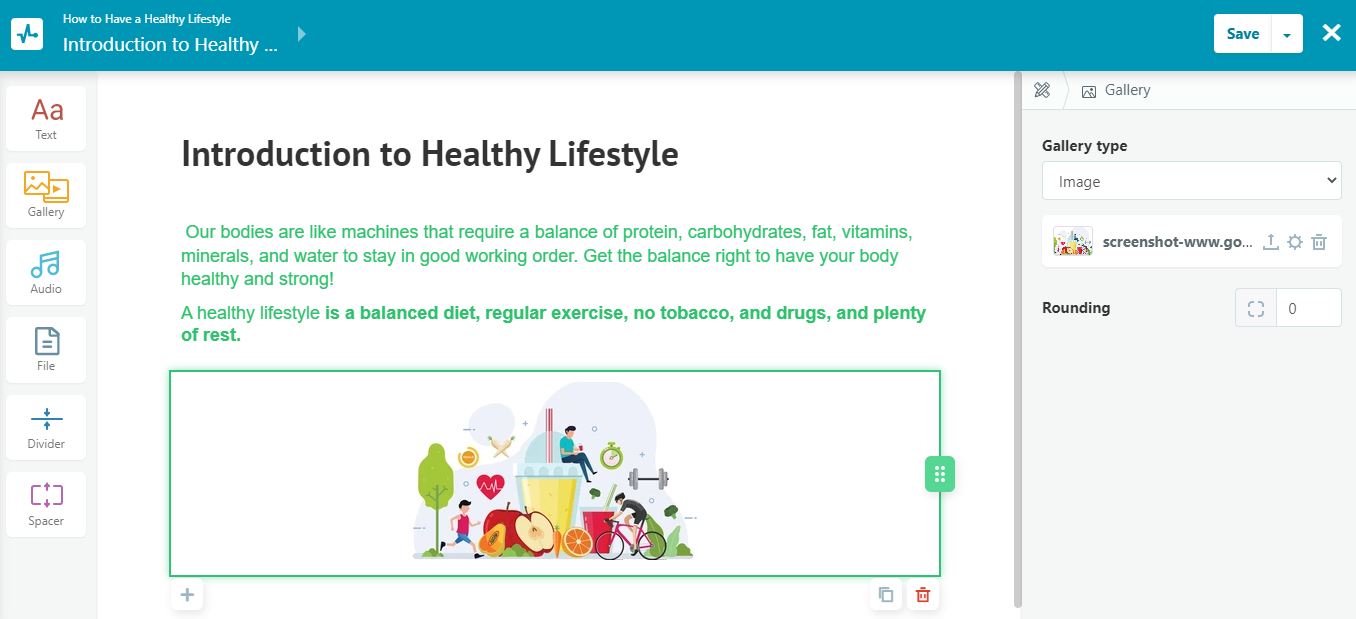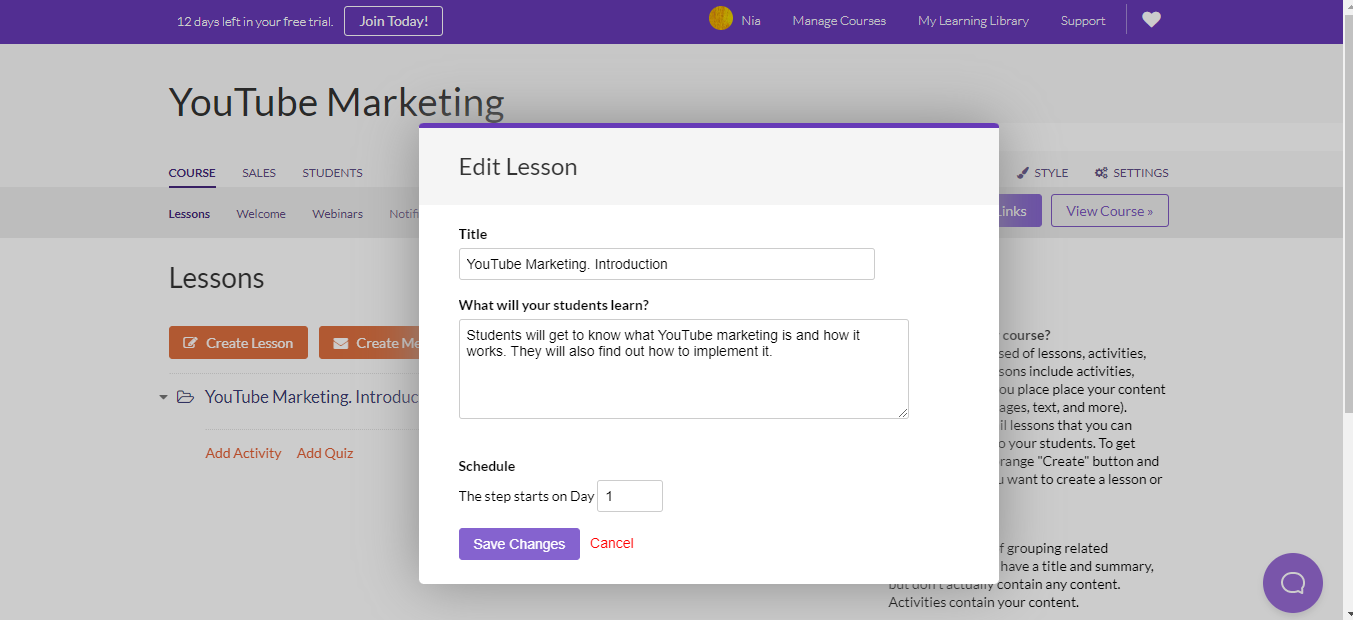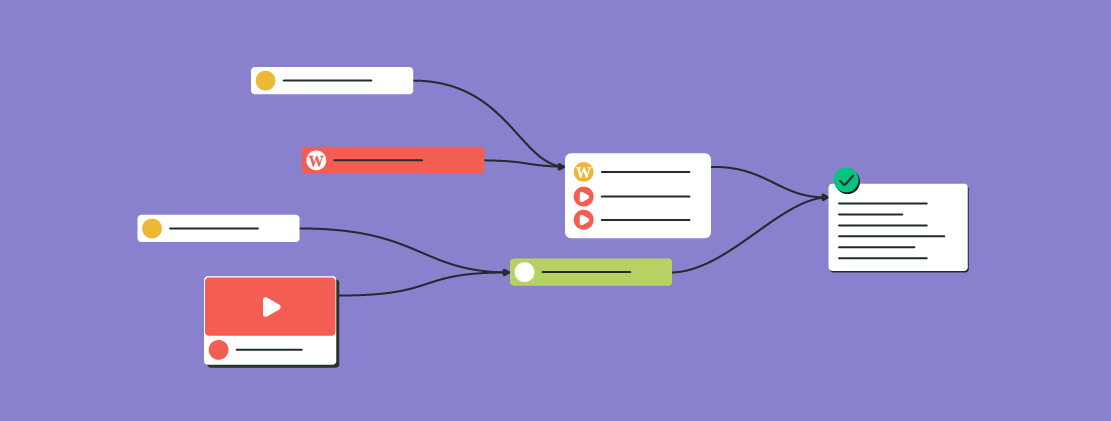Distance learning is the process of teaching students online, which implies studying from home and receiving materials and lectures via the internet. It allows learners to take classes in colleges and universities, training, and online courses in any country. You can create an online course for free with SendPulse without any technical skills.
In this video, a SendPulse marketer, Anna, shares the perks of monetizing your digital education expertise and tips on switching to teaching.
In this article, we’ll uncover the pros and cons of distance learning, its types, and the 3 best platforms. We’ll also compare distance and online learning.
Why is distance learning important?
Due to COVID-19 outbreak, the process of learning has changed. Colleges, universities, and schools have switched to distance learning to ensure education for students. Distance learning is a perfect alternative to traditional education, where students and teachers should interact face to face. Educators can utilize technological innovation and inspire students to study hard to reach their goals.
Now people can find various courses, training, and master classes to obtain new knowledge and skills. They can master new professions remotely from any location. For example, influencers with millions of followers share their success stories and the power of Instagram. They teach how to write posts, pose for photos, and increase social media engagagement.
With distance learning, students can earn their degrees without any need to leave their homes and move to a new city. They can stay in their comfort zone and save money on paying for a room in a dormitory. Online classes allow students to stay flexible and combine work with their studies. Moreover, the price of online learning is lower than offline.
Now that you know the importance of distance learning, it’s time to uncover more reasons to consider making an online course for your business, school, college, etc.
Advantages and Disadvantages of Distance Learning
eLearning brings many benefits to students and teachers. We’ll review them all so that you can decide which type of learning you would like to implement.
The advantages for students include:
- flexibility (can access the class anytime from anywhere);
- lower price (distance learning is usually more affordable than offline);
- technological innovation (teachers use all advantages of technology and the internet to provide the best knowledge);
- saved time on getting to the classrooms of universities and colleges;
The advantages for educators include:
- various formats of lessons;
- flexibility (different schedules: asynchronous and synchronous learning);
- saved time on traveling to class;
- the opportunity to teach from anywhere in the world;
- space for the application of theories;
- time to answer students’ questions in private messages or group chat.
Each approach in education has both pros and cons. Since you need to be aware of both sides of this business, we’ll unveil the drawbacks.
During online classes, students can
- get distracted by their devices;
- lose their focus because of big amount of information;
- have a lack of face-to-face interactions with teachers and students;
- have a poor internet connection;
- feel isolated;
- have a laptop without necessary characteristics;
- face technical problems.
During online classes, educators can’t
- prevent cheating;
- communicate with students in person and explain complex material;
- focus on practice;
- have full control of students who neglect assignments.
Now that you know the benefits you can reap after incorporating distance learning, let’s compare distance learning and online learning. People often suppose these concepts are the same, although they aren’t.
Distance Learning vs Online Learning
In this section, we’ll clarify the difference between distance and online learning, so you don’t misinterpret the terms. The concepts are different in terms of location, intention, and interaction. Let’s start with distance learning.
Distance learning is a learning process that involves an educator teaching and students studying remotely. Students visit online classes via the internet, and teachers check assignments online. The participants of the learning process can join the class from anywhere in the world. The process doesn’t include any in-person interaction.
Online learning is a learning process that implies students studying and communicating with a teacher in real time. A teacher has an eye on their progress. Students join lessons through Zoom, Google Meet, or Cisco Webex. Learners can communicate with teachers live, ask questions, and share opinions. Students can also request a teacher to explain some unclear points.
Simply put, distance learning is solely remote learning where students access real-time or recorded lessons, while online learning is real-time exclusively learning..
Now that the difference is clear, it’s time to proceed to the types. The next section will help you decide which distance learning format fits your main goal.
Types of Distance Learning
There are four main types of distance learning. Let’s review each of them to find out the details.
- Synchronous distance learning. Educators deliver information to students in real-time using special video conferencing tools like Zoom, Google Meet, Cisco Webex, and Skype or chatting online. Usually, participants connect with each other using video. Synchronous learning implies live communication online and it is less flexible than other forms of distance learning. The platforms help students and teachers communicate and see each other in real time.
- Asynchronous distance learning. Teachers provide students with materials and deadlines to complete the tasks. Students work on their assignments on their own in their free time but they still have the opportunity to contact their instructors. Once they complete the tasks, they submit them through universities’ sites. Students only get access to a new module after completing the previous one.
- Hybrid distance learning. It’s an integration of synchronous and asynchronous distance learning. Hybrid distance learning is the most popular form of distance learning that implies students accessing the course at a designated time and pre-recorded lessons. Instructors provide learners with pre-scheduled classroom activities they should complete to proceed to the next section. Students might be given tests, quizzes, surveys, and other forms of assignments after completing a lesson or section. These courses encourage interaction between students and communication with experts. Students can ask questions and share their opinions. These courses have little space for independent work.
Now that you know the types and can decide which one you prefer, it’s time to explore the platforms. One of these services will come in handy when you are ready to create an online course.
3 Best Distance Learning Platforms
The choice of distance learning platforms is vast. Your main task is to select the one that suits you in terms of short-term and long-term goals, usability, price, number of students, and courses. We’ll now review the 3 top services for you to consider. They are affordable, easy to use, and have an intuitive interface.
SendPulse
SendPulse is an all-in-one marketing solution that will help you create online courses, promote them, and manage communication with students. The platform offers you to send email campaigns, web push, SMS, and set up chatbots. For an affordable price, you’ll be able to create online courses for different purposes: online schools, employee training, customer onboarding, etc.
You can share your expertise in an interactive way by using SendPulse’s drag and drop editor to add multimedia. The service allows you to apply plenty of content formats like videos, audio, text, PDFs, downloadable items, infographics, and other images. This way, your course will look more attractive and exciting to students.
If you have no intention to develop the course by yourself and you have a team of professionals, you can add instructors. They will manage different tasks, including program development, creating lessons, designing tests, monitoring students’ progress, and issue certificates of completion. With the help of the platform and your team, you’ll be able to create a course from scratch and provide an exceptional experience to students.
Once you build a course, think about the channels you prefer to use for promotion. Use SendPulse to send email campaigns informing your subscribers about your upcoming course, set up chatbots to share the details about the start, and deliver SMS to remind them about the event. Since you don’t need to change the platform to perform different tasks, you can save your time on adding information.
With SendPulse, you don’t need to think about how to accept payment from students. The service has integrations with famous payment systems like PayPal, Stripe, and Liqpay.
Below you can see how to create a lesson in the service.

Free plan: 3 courses, 200 students, 1 instructor, and 1 GB of file storage space.
Paid plan: From $42 for unlimited courses, 1,000 students, 10 instructors, 15 GB of file storage space, personalized course link, and no SendPulse branding.
Ruzuku
Ruzuku is a platform that focuses entirely on creating, selling, and teaching online courses. The service provides training to its users, so you will figure everything out very fast and be ready to build courses. The interface is user-friendly, so you’ll create and launch eLearning in no time.
With Ruzuku, you’ll be able to design a visual course and encourage students to remember the essential information. If you have your materials ready, you can add them to the course so that it looks more interactive. You can diversify text with videos, audio, and PDFs in minutes. The platform provides students with space for their opinion. The service allows users to leave comments and share ideas under the course’s images. This way, you can make sure that students are involved in your learning process. Ruzuku helps build both classes and communities for like-minded people.
The service has integrations with universally accepted payment solutions. You can accept payments from students through Stripe and PayPal or add another payment method.
Below you can see how to create a lesson in Ruzuku.

Free plan: 14-day trial.
Paid plan: From $99 per month for unlimited courses, students, and 1 instructor.
Systeme.io
Systeme.io is a multifunctional platform that enables you to send email campaigns, create websites, run evergreen webinars, and build online courses. The service is simple in use and doesn’t require any technical skills. The platform’s team worked at your convenience and took care of your product promotion. Once you build your course, you can create a website, integrate course access and payments, and sell it to students.
The solution is fully integrated. It means that you can use all features without any need to input information several times and save your time and effort.
With Systeme.io, you can grant access to a course for students on a specific date. The platform allows you to register students for your courses by giving them full access or drip content. Full access implies having instant access to all lectures, while drip content implies accessing classes in progression. With drip content, students have to complete the lesson to proceed to the next one.
Drag and drop the elements you want to add to your course. You can use videos, podcasts, text, and images to draw attention and increase memorability.
To receive payments from students, consider using Paypal and Stripe integrations. They will guarantee your money is safe.
Below you can see how to build an online course in Systeme.io.

Free plan: 1 course, unlimited students, unlimited storage space, and assistant accounts.
Paid plan: From $27 per month for 5 courses, unlimited students, storage space, and assistant accounts.
Congrats, now you know what distance learning is and why it’s essential. Hope that the list of recommended services will be useful when you decide to develop your course!
References:
- This article defines the term and unveils the advantages of distance learning.
- In this article, you’ll find types of distance learning.
read more about distance learning on our blog
Last Updated: 06.09.2023





or